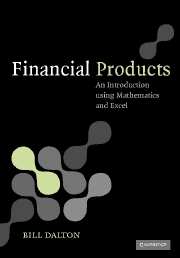Summary
A supermarket chain was experiencing cash problems. One of the principal share holders is uncomfortably aware that a large fall in the share price would hit her investment hard.
She talked to the chairman. ‘Yes, we are having a few problems at the moment, but these are purely short term. The share price will bounce back and may even rise when the market realises this.’
The share holder was reassured. Almost. She rang her financial advisor. ‘I would like to know the price of an option that will show a profit if the share price rises. But also, I would like to know the cost of an option that will pay me money when the share price rises and also when the share price falls.’
There was a short silence. ‘I'll get back to you.’
In this chapter we describe a method for calculating the value today and at future times of a wide range of options. The value of an option will be dependent on the pay-off from the option and hence on the values of the underlying asset. So we will need to find a model for prices of the underlying asset. Maturity is the time the option value is known. At maturity, option value = pay-off from the option. So it would be sensible to to ‘start’ option pricing at maturity and then work back through time to today.
- Type
- Chapter
- Information
- Financial ProductsAn Introduction Using Mathematics and Excel, pp. 288 - 347Publisher: Cambridge University PressPrint publication year: 2008



